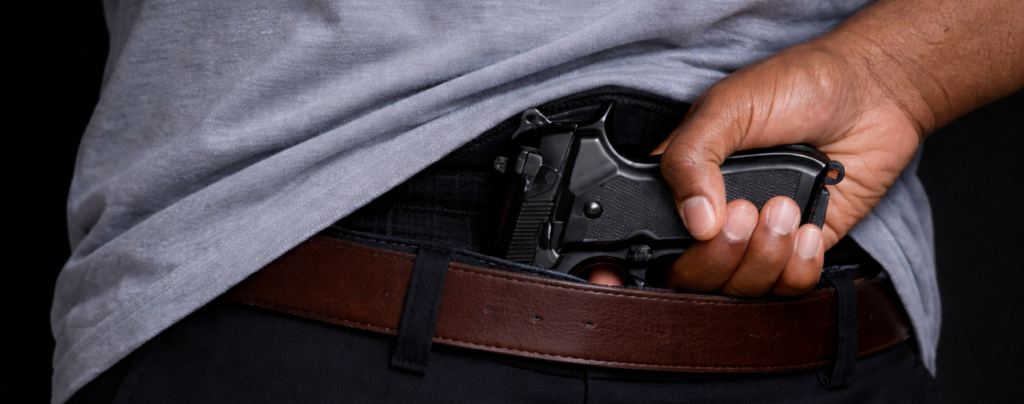As law enforcement officers, you operate in dynamic, high-stakes environments where split-second decisions are often the norm. Your interactions with vehicles, particularly during pursuits, are among the most scrutinized aspects of your duty, often leading to litigation if an incident results in injury or death. Understanding how courts analyze these situations, drawing on distinct constitutional frameworks, is crucial for your training, actions, and decision making.
There are generally two different categories of police interactions with vehicles. The first involves pursuits and the second involves officers directing force at a vehicle or an occupant. This latter category may evolve from a pursuit or may occur in isolation when conducting traffic stops or otherwise approaching vehicles. The law is different for each category. This article aims to break down the key legal standards under the U.S. Constitution (I won’t address state tort laws) and provide practical insights based on landmark Supreme Court decisions.
Note: This article was developed to be a resource to the Lexipol webinar, “Cops and Cars: Changing the Training Paradigm” (Aug. 13, 2025). You can access the webinar here.
Two Paths of Constitutional Analysis: Due Process vs. Fourth Amendment
When a police action involving a vehicle leads to harm, courts primarily apply one of two constitutional standards: the 14th Amendment’s guarantee of substantive due process or the Fourth Amendment’s protection against unreasonable seizures. The choice between these two frameworks depends critically on whether the officer’s actions constitute an intentional “seizure” of the person harmed.
The Fourth Amendment protects against unreasonable searches and seizures. In the 2021 case of Torres v. Madrid, the U.S. Supreme Court clarified and reinforced how a seizure of a person occurs, especially when physical force is involved: A seizure of a person can take the form of “physical force” or a “show of authority” that “in some way restrains the liberty” of the person.
Officers had a warrant for Torres and were attempting to execute it when she got into her car and drove away. The officer fired 13 rounds at her as she fled, striking her twice. She managed to flee but officers arrested her in a hospital the next day. Torres sued for her injuries, but the District Court and the 10th Circuit Court of Appeals granted the officers summary judgment, ruling that since Torres initially escaped, she was not seized and, therefore, her excessive force claim was negated.
The Supreme Court reversed, ruling that the application of physical force to the body of a person with intent to restrain is a seizure, even if the person does not submit and is not subdued. This means, for instance, that officers seizing a person by shooting them with bullets constitutes a seizure, even if the person temporarily eludes capture and drives away.
For physical force to constitute a seizure, it must be applied with the objective intent to restrain. Accidental force, or force applied for purposes other than apprehension, does not qualify. The inquiry is whether the officer’s conduct objectively manifests this intent. The Court noted that a simple “tap on the shoulder to get one’s attention will rarely exhibit such an intent.” The subjective motivation of the officer or the subjective perception of the suspect does not control this test.
Finally, a seizure by force, absent submission by the individual, lasts only as long as the application of force. Even brief seizures, as in this case when the seizure was the bullets striking Torres, are still considered seizures.
“The law is not the only consideration. Pursuits are dangerous and innocent lives can be at risk.”
The 14th Amendment and Substantive Due Process
The 14th Amendment’s due process clause protects individuals from arbitrary governmental action that deprives them of life, liberty, or property. This includes a “substantive” component that bars certain government actions regardless of the fairness of the procedures used. In the context of police pursuits, substantive due process applies when an officer’s actions cause harm, but do not involve an intentional seizure of the individual. This typically occurs when the harm is an accidental outcome of the pursuit, rather than a direct result of means intentionally applied to terminate movement.
For a police pursuit to violate substantive due process the actions of the officers involved must be so outrageous that it “shocks the conscience.” This standard can be taken literally and is a very high bar for liability. The core of due process is to protect against arbitrary governmental actions, but only the most egregious official conduct is considered arbitrary in a due process analysis. The courts recognize high-speed chases involve unpredictable circumstances and require officers to make rapid decisions. Officers face competing obligations: to restore lawful order by apprehending a suspected offender, while also minimizing the exacerbation of disorder and risk to others. Decisions made under pressure during pursuits and in time-compressed situations do not allow the luxury of second chances.
Courts have made it clear that negligently inflicted harm is categorically beneath the threshold of constitutional due process. The Constitution does not impose liability for every harm caused by a state. Behavior that is deliberately intended to injure in a way unjustifiable by any government interest is most likely to reach the conscience-shocking level.
This critical distinction was cemented in County of Sacramento v. Lewis. In this case, Deputy James Smith pursued a motorcycle driven by Brian Willard, with Philip Lewis as a passenger. The chase reached speeds of 100 mph in a residential area. When the motorcycle tipped over, Smith’s patrol car skidded into Lewis, causing his death. Lewis’ parents sued, alleging a deprivation of Lewis’ 14th Amendment substantive due process right to life.
The 9th Circuit Court of Appeals reversed the initial summary judgment for Smith, arguing that “deliberate indifference to, or reckless disregard for, a person’s right to life and personal security” was the correct standard. It found a genuine issue of material fact based on Smith’s apparent disregard for the sheriff’s department’s general order on police pursuits.
The Supreme Court, however, reversed the 9th Circuit. It held the Fourth Amendment’s reasonableness standard did not apply because there was no seizure of Lewis; Smith did not intentionally terminate Lewis’ freedom of movement, but rather accidentally collided with him. The Court found that for a high-speed chase aimed at apprehending a suspected offender, only a purpose to cause harm unrelated to the legitimate object of arrest will satisfy the shocks-the-conscience test. Since Smith’s actions were an instinctive response to lawless behavior and not driven by an improper or malicious motive, his conduct, even if considered conscious disregard or reckless disregard, did not meet this demanding test.
In summary, for situations causing accidental harm during pursuits, officers are generally protected unless their actions demonstrate an actual intent to harm, separate from the legitimate goal of apprehending a suspect. You may be reading this and thinking that you must do something really, really bad to have liability during a pursuit. I must remind you, however, that the law is not the only consideration. Pursuits are dangerous and innocent lives can be at risk. In any case, once you decide to take some physical action to terminate a pursuit, the standard changes.
The Fourth Amendment and Objective Reasonableness
The Fourth Amendment applies when an officer’s actions constitute a seizure of a person. In the context of vehicle interactions, a seizure occurs when an officer intentionally takes some action designed to stop a vehicle. This includes intentionally ramming a vehicle to stop it or shooting a driver to halt their flight. Claims of excessive force during such a seizure are analyzed under the Fourth Amendment’s objective reasonableness standard.
By now, you are certainly familiar with this standard, but here’s a brief recap from Graham v. Connor: Objective reasonableness “requires a careful balancing of the nature and quality of the intrusion on the individual’s Fourth Amendment interests against the countervailing governmental interests at stake.” This analysis must be conducted from the perspective “of a reasonable officer on the scene, rather than with the 20/20 vision of hindsight.” Courts acknowledge that officers are “often forced to make split-second judgments — in circumstances that are tense, uncertain, and rapidly evolving — about the amount of force that is necessary in a particular situation.”
If there are genuine issues of material fact regarding the circumstances confronting the officer (e.g., where the officer was standing, whether they were in a “zone of danger,” the speed and velocity of the vehicle, or whether the officer could have safely moved out of the way), these factual disputes must be determined by a jury, precluding summary judgment on the issue of objective reasonableness. For example, conflicting accounts of whether a vehicle was “bearing down” on the officer or moving slowly/not at all, and whether the officer was substantially off to the side, may directly impact the reasonableness assessment.
Timely legal analysis on law enforcement-related cases: SUBSCRIBE NOW!
Scott v. Harris was a landmark case that clarified the application of the Fourth Amendment’s reasonableness standard to high-speed police pursuits involving intentional termination of movement. In this case, Deputy Timothy Scott pursued Victor Harris, who was speeding and engaged in a dangerous high-speed chase for nearly 10 miles, swerving around other cars, crossing double-yellow lines, and running red lights. After Harris evaded a rolling roadblock and collided with Scott’s cruiser in a parking lot, Scott performed a precision intervention technique (PIT) maneuver, ramming Harris’ vehicle, which caused it to crash and rendered Harris a quadriplegic.
A crucial aspect of Scott v. Harris was the existence of a videotape of the chase. The Supreme Court found that the videotape “blatantly contradicted” Harris’ version of events, which downplayed the danger he posed. The video depicted a “Hollywood-style car chase of the most frightening sort,” showing that Harris’ driving placed police officers and innocent bystanders at great risk. This emphasizes that courts will rely on objective evidence, like video, to determine the facts for summary judgment motions, even if it contradicts the plaintiff’s allegations.
The Court rejected the argument that police should simply cease pursuit, noting the “perverse incentives” such a rule would create for fleeing suspects, enabling them to escape by driving recklessly. It also highlighted the uncertainty of whether a suspect would indeed slow down if the pursuit ended.
The Court held that a police officer’s attempt to terminate a dangerous high-speed car chase that threatens the lives of innocent bystanders does not violate the Fourth Amendment, even when it places the fleeing motorist at risk of serious injury or death. It weighed the high likelihood of serious injury or death to Harris against the “actual and imminent threat” Harris posed to others. The Court found it reasonable for Scott to act, considering that Harris intentionally endangered himself and the public through reckless flight, while those threatened were innocent.
In sum, while Scott was pursuing Harris, any potential harm that may have occurred (e.g., Harris crashing into another vehicle) would have been judged by the 14th Amendment’s shocks-the-conscience standard. But once Scott executed the PIT maneuver — an intentional action designed to stop Harris’ vehicle — the Fourth Amendment’s objective reasonableness standard applied.
Plumhoff v. Rickard further reinforced Scott’s reasoning and provided additional clarity, particularly on the duration and extent of force. Donald Rickard led officers on a five-minute, 100-plus-mph high-speed chase, forcing dozens of other vehicles to alter course. The chase briefly halted when Rickard’s car collided with a cruiser, but he immediately attempted to escape again, pushing the accelerator with his bumper against a police car and almost hitting an officer while reversing. Officers responded by firing 15 shots into Rickard’s car over a 10-second span. Rickard eventually crashed and died along with his passenger.
The Supreme Court reversed the lower courts, concluding the officers’ conduct did not violate the Fourth Amendment. Applying the Graham v. Connor and Scott v. Harris standards, the Court emphasized that Rickard’s “outrageously reckless driving posed a grave public safety risk.” The Court found that a reasonable officer would conclude Rickard intended to resume his flight, posing a deadly threat to others.
Crucially, Plumhoff addressed the number of shots fired. The Court stated that if officers are justified in firing at a suspect to end a severe threat to public safety, they need not stop shooting until the threat has ended. Since Rickard continued to attempt flight and managed to drive away even after shots were fired, the officers did not fire more shots than necessary to end the public safety risk. But in a different case, under different circumstances, the number of shots fired and when may become an issue.
Key Considerations for Law Enforcement Officers
This article provides an overview of federal constitutional law as it pertains to pursuits and the termination of pursuits. While the cases presented all dealt with pursuits, the same laws would govern the actions of officers when approaching a vehicle to interview a driver or when officers are on a traffic stop and the need to use force arises. You may read these case summaries and believe the law may be forgiving, but remember, every such case will be analyzed based on its own unique facts and circumstances. Conflicting versions of facts can lead a court to determine the case will need to proceed to a jury.
Incidents involving officer interactions with vehicles are also very dangerous for everyone involved – the officers, the occupants of the target vehicle, and innocent bystanders. This is why Lexipol’s Use of Force Policy cautions strongly against shooting at vehicles:
Shots fired at or from a moving vehicle are rarely effective and involve considerations and risks in addition to the justification for the use of deadly force. When feasible, officers and deputies should take reasonable steps to move out of the path of an approaching vehicle instead of discharging their firearm at the vehicle or any of its occupants.
Remember that this article was intended to be a supplemental resource to the webinar referenced in the opening paragraphs. Considering both together will provide you with a more complete understanding of all the relevant issues.
- Blog Articles



